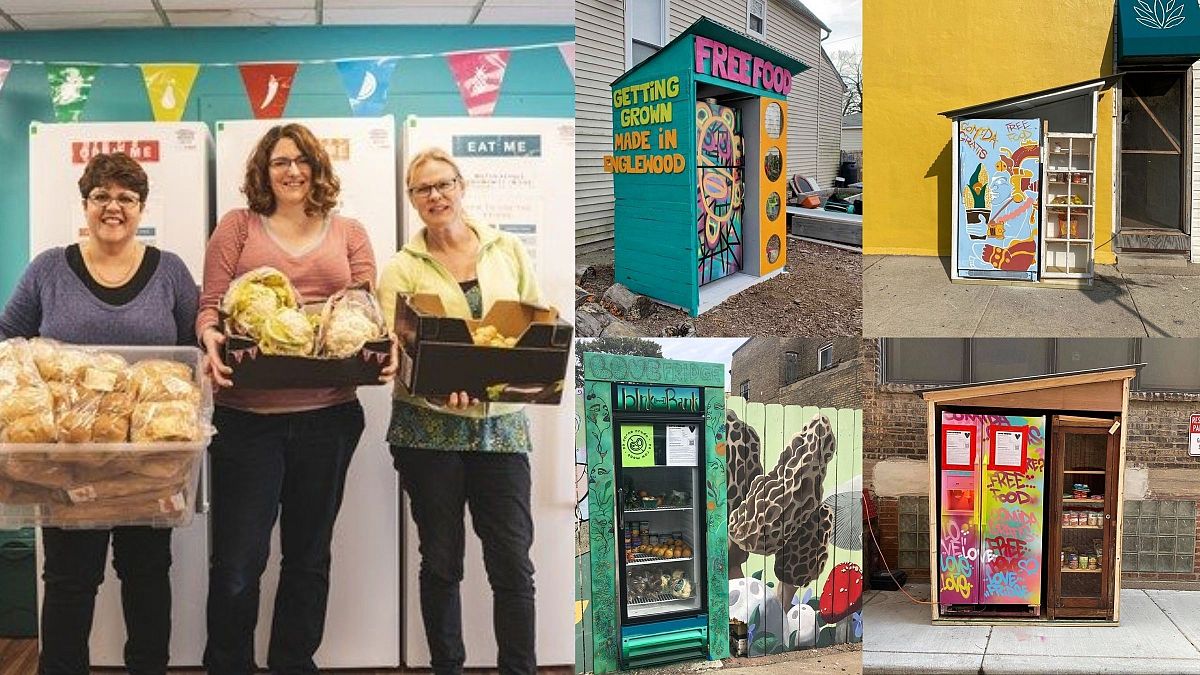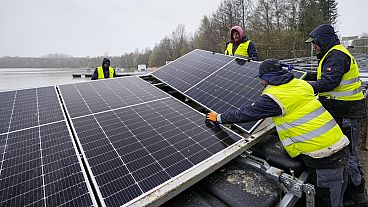Community fridges, where local residents come together to share supplies, have become a vital resource around the world during the coronavirus crisis.
Community fridges, where local residents come together to share supplies, have become a vital resource around the world during the coronavirus crisis.
During times of scarcity, community often becomes a means of survival - especially when the institutions we rely on fail to provide adequate support and resources. This idea of community care was seen throughout the pandemic, fuelling various food banks and donations for vulnerable families and individuals.
One key method of addressing resource issues has been through community fridges, where individuals work together to find a solution to our growing food security and waste crises.
What is a community fridge?
Already a popular project in New York, community fridges allow residents to drop off unwanted or unused food items, in the hopes of supporting vulnerable members of the community. These spaces run on a goodwill basis, with residents trusting each other to be honest and respectful of everyone’s financial circumstances.
In New York, community fridges were built around the premise of reducing shame, whilst also diverting food waste.
Elsewhere in the US, the Love Fridge is a Chicago-based initiative offering mutual aid to families in need.
“We want to normalise the idea of your community being something you can support on a regular basis in a small way so that everyone’s lives are just a bit easier,” explained Sara Allen, co-organiser of the Friendly Fridge BX, to Well and Good. “Just because you’re not going to use [something] doesn't mean it needs to go to waste.”
Across Europe and Central Asia, it is predicted that around 100 million people experience food insecurity, with this figure expected to rise as a result of the pandemic. When it comes to food waste, in Europe an estimated 20 per cent of food produced is either lost or wasted.
Community fridges across Europe
In the UK, community fridge programmes are continuing to expand, with volunteers and residents being pleasantly surprised by the way communities are showing up for others.
After trialling their first community fridge in Derbyshire in 2016, Hubbub now coordinates over 150 community fridges across the UK, with more being set up every day. Now partnering with UK supermarket chain, Co-op, Hubbub plans to expand to 250 fridges by the end of 2022.
After researching the community fridge movement through Hubbub, Kenichi Narita brought the community fridge idea to Japan. After setting up in Okayama in November 2020, Japan has its first community fridge, with plans to expand the project to other locations.
Similar schemes have cropped up all over Europe; in Galdakao, a small village outside of Bilbao in Spain started one of the first community fridge schemes in 2015, known as the ‘solidarity fridge’.
Local businesses and restaurants utilized their own supplies of leftover food, donating regularly to the fridge, along with other residents’ homemade dishes. Since then, solidarity fridges have sprung up across Spain, with locations in Valencia and Barcelona, as well as smaller towns and villages throughout the country.
As the pandemic continues to cause financial and social uncertainty, community fridges are becoming a global movement, with many schemes continuing to champion community solidarity.




